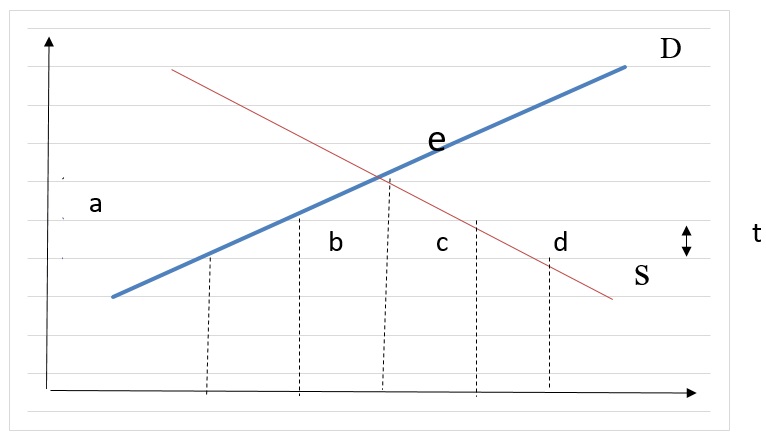The Impact of Tariff On the Net Importer Production in United States (Steel)
In the United States, the tariffs are established on all the materials which are imported from the other countries. The five percentage tariff is set on the steel (Galbraith, 2018). Tariffs are the tool contributing to supporting the domestic business by making the imported materials more expensive. In other words, tariffs balance the import and domestic of particular goods. Considering the negative impacts of the tariffs on the market, the higher prices for consumers should be mentioned. Tariffs can be compared with taxes, which, based on the rules of economic functioning, increase the price which consumers pay for steel. The positive impacts include, for example, the intention to enhance the development of the steel industry, like in the case of the Steel and Aluminium Tariffs, which Donald Trump implemented in 2018 (Galbraith, 2018). Based on the practical estimation, this tariff empowered the creation of new job opportunities and ensured national security (Galbraith, 2018). The last factor is correlated with eliminating the dependence of the country on imported materials.
Supply and Demand Graph On World Trade and A Tariff
The impact of an import tariff on the economy of certain countries is different depending on the country’s economic significance in the world market. All countries are divided into two groups: small and large (Vaillancourt, 2019). A country is considered small if a change in its demand for imported goods does not lead to changes in world prices. A country is deemed to be significant if a change in its request for imported goods leads to changes in world prices. Most of the world’s countries are small. The United States can impact the world’s market conditions. The income effect in the case of a large country seems to fall into two parts: the effect of domestic income and the effect of the terms of trade (Vaillancourt, 2019). Figure 1 illustrates the correlation between supply and demand changes under the particular tariff. T – tariff, zones b, and d are the net losses of society from the introduction of an import tariff; rectangle c is the transfer of consumer surplus to the government, which receives revenue from the tariff; e is equilibrium in the market; a is the domestic market price with the tariff; s is supply in the domestic market; d is demand in the domestic market.

Winners and Losers from the World Trade and Tariff
World Trade
The world trade and tariffs implementation can be beneficial for particular sides of the trading relationships. For example, the winners can be considered the government in world trade. Through world trade, authorities of the countries can strengthen political ties. Domestic and foreign consumers are the winners in world trade conditions because of the variety of available resources. Foreign producers are in a vague position because of the taxes and tariffs regarding export and import. On the one hand, it can be helpful to broaden the business opportunities, while on the other increase the spending due to the increased taxes and tariffs. The losers of world trade are the domestic producers due to the decrease in national production. If there are goods available abroad, there is no incentive to create goods ourselves. As a result, such an economy turns, at best, into a raw-material economy that does not develop the country. Such a situation can cause the bankruptcy of national producers and increase unemployment within the country.
Tariffs
Analyzing the tariffs’ winners, again, the government can be mentioned. The amount of taxes collected from domestic consumers increases. Consequently, more money in the state treasury can be used to improve public welfare. Domestic producers are the winners in the conditions of the tariffs. Especially it is related to ones which are uncompetitive on the world market. Domestic and foreign consumers are the losers in such cases because the taxes and prices will be significantly increased. Foreigner producers are also losers because of the price change and tariffs-related impact on them.
Arguments for Tariffs
The textbook provides an analysis of the benefits of tariffs and trade deal advantages, and the formation process. One of the main advantages of the tariffs mentioned by the authors is that tariff empowers the “negotiations among many of the world’s countries to promote free trade” (Mankiw, 2001, p. 181). In other words, the countries establish the regulations for fixed taxes and tariffs in order to adjust and empower the communication between countries. Another argument is related to the idea that the tariff is the protection of young industries (Mankiw, 2001, p. 181). New branches of industry, which are still being created in some countries need temporary customs protection from the state. Without such protection, at least for the period of formation, the influx of foreign goods will destroy the new administration and do not cause sickness. The tariff is a means of stimulating domestic production (Mankiw, 2001, p. 181). Since the market of a particular country is unable to compete with cheaper goods produced abroad with better technology, it needs to be protected by an import tariff (Mankiw, 2001, p. 181). Moreover, the absence of tariffs could lead to job losses as a result of reduced production, which will impose an additional burden on the budget, making the unemployment payment necessary.
References
Galbraith, J. (2018). U.S. tariffs on steel and aluminum imports go into effect, leading to trade disputes. The American Journal of International Law, 112(3), 499–504.
Mankiw, G. (2001). Principles of microeconomics. Cengage Learning.
Vaillancourt, S. (2019). The effects of tariffs on the US Economy. University of Hew Hampshire Scholars’ Repository, 459, 1–23.
